There’s something timeless about a simple 3-egg omelet — golden on the outside, fluffy inside, and filled with whatever your heart (or fridge) desires. It’s breakfast comfort at its finest. Whether you’re making a quick weekday meal or a slow Sunday brunch, mastering the classic omelet is easier than you think — and it all starts with a few small tricks.
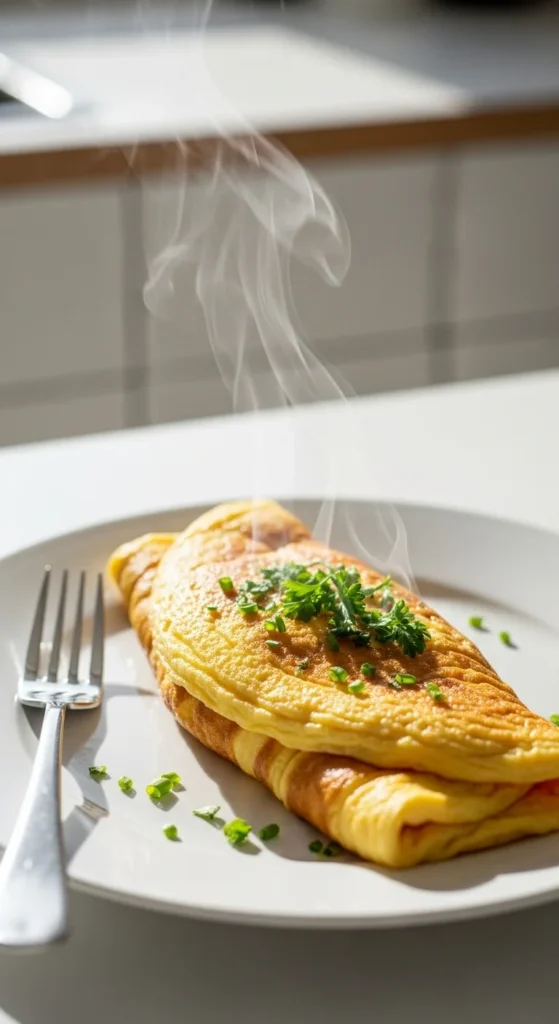
Why the 3-Egg Omelet Works
Three eggs hit that perfect balance between hearty and light. It’s just enough protein to keep you full, but not so much that your omelet turns thick or rubbery. When cooked the right way — low and slow — the result is soft, creamy, and melt-in-your-mouth good.
The secret? Gentle heat and patience. Most omelets fail not because of ingredients, but because of rushed cooking. You’re not frying eggs — you’re coaxing them into a tender cloud.
Step 1: Gather Your Ingredients
Here’s everything you need for the perfect omelet:
- 3 large eggs
- 1 tablespoon butter (or olive oil for a lighter touch)
- Salt and black pepper, to taste
- 2 tablespoons milk or cream (optional, for extra fluffiness)
- Fillings of your choice:
- Shredded cheese (cheddar, Swiss, feta, or Gruyère)
- Diced vegetables (bell peppers, onions, mushrooms, spinach)
- Cooked meats (ham, bacon, sausage)
- Fresh herbs (chives, parsley, dill)
- Shredded cheese (cheddar, Swiss, feta, or Gruyère)
Pro tip: Have everything chopped and ready before you start cooking — omelets move fast once they hit the pan.
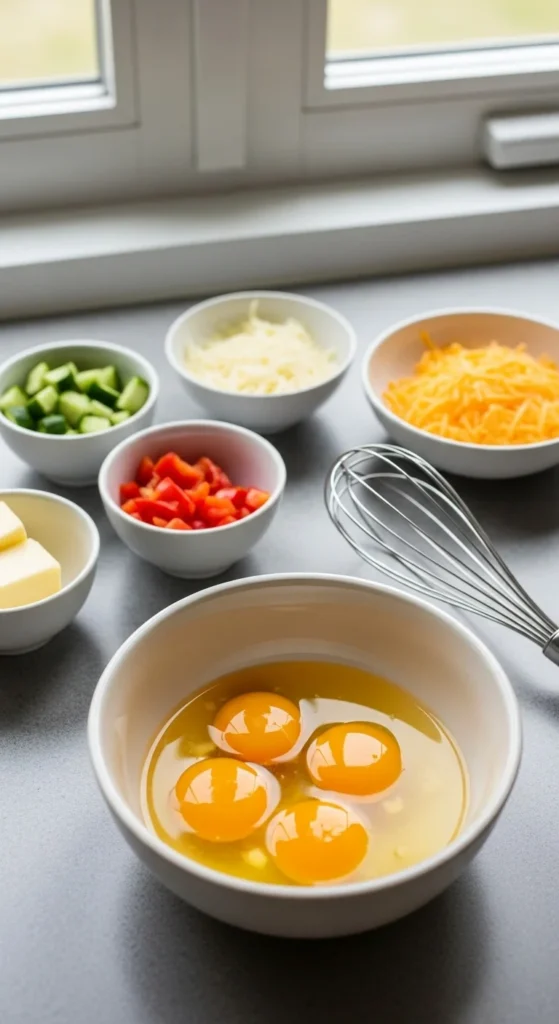
Step 2: Whisk Like a Pro
Crack your eggs into a bowl and whisk until completely smooth and uniform in color. Add a pinch of salt, pepper, and a splash of milk or cream if you like your omelet extra fluffy.
Whisking tip: Don’t just break up the yolks — incorporate air by using quick, circular motions. The more air in your eggs, the lighter your omelet will be.
You’ll know it’s ready when the mixture is pale yellow and slightly frothy.
Step 3: Heat the Pan (The Right Way)
Use a nonstick or well-seasoned skillet, about 8 inches wide — perfect for a 3-egg omelet. Place it over medium-low heat and melt the butter, swirling it around until it coats the surface evenly.
If the butter sizzles or browns too fast, your pan is too hot. Lower the heat — a gentle temperature ensures even cooking without browning the eggs.
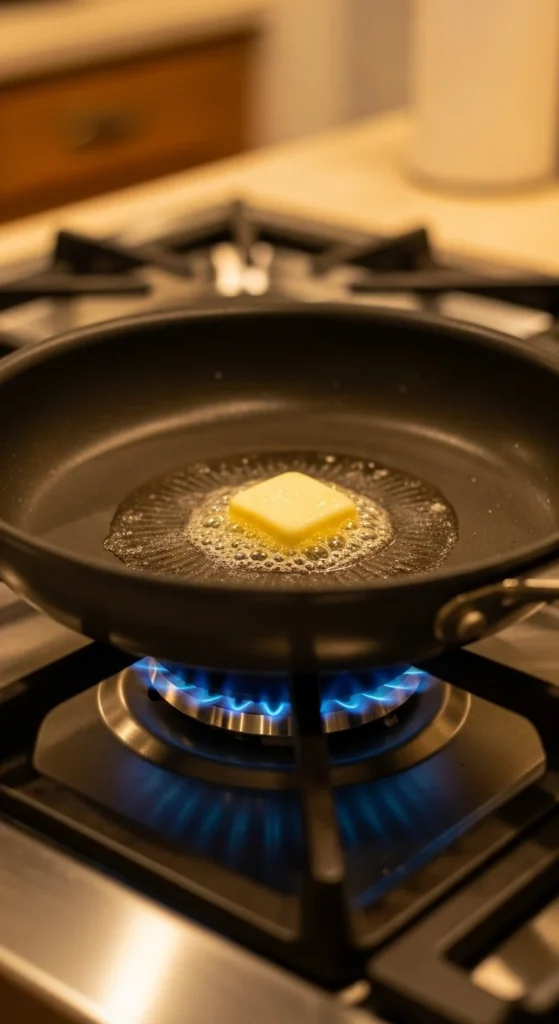
Step 4: Cook the Eggs Slowly and Evenly
Pour in the whisked eggs and tilt the pan so they spread evenly. As the edges start to set, use a spatula to gently push the cooked parts toward the center, tilting the pan to let the uncooked egg flow outward.
Repeat this process a few times until the top is still slightly glossy but not runny. The goal is softly set eggs — not browned, not dry.
If you’re adding fillings, now’s the time to sprinkle them evenly over one side of the omelet.
Pro tip: Less is more. Overstuffing makes folding messy and can break your omelet.

Step 5: Fold and Finish
When the eggs are just about set, gently fold the omelet in half with a spatula. You can fold it completely in half or into thirds for a more elegant restaurant-style look.
Let it cook for another 20–30 seconds to melt the cheese and heat the fillings through, then slide it carefully onto a plate.
If you like, brush the top lightly with butter for a beautiful shine. Garnish with herbs or a sprinkle of pepper for that finishing touch.
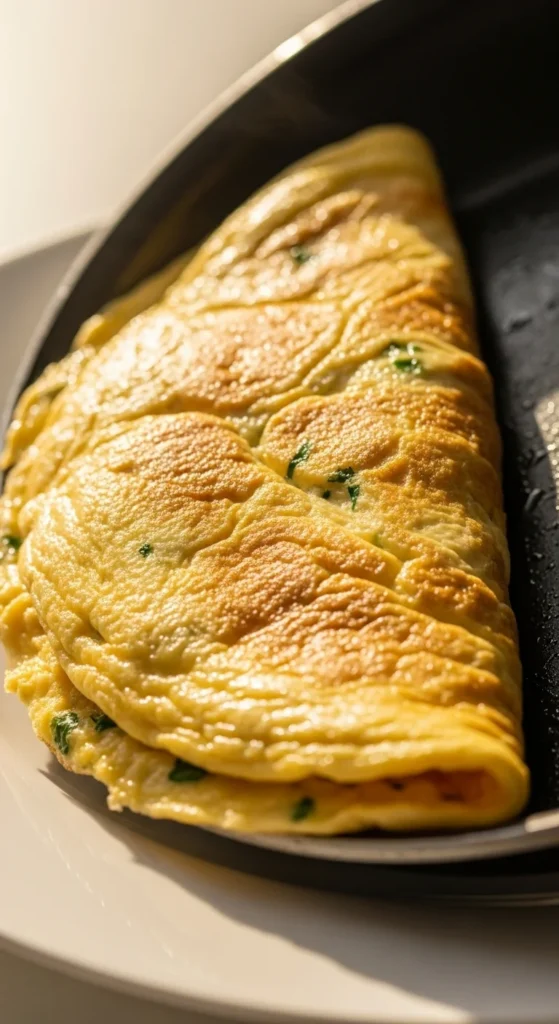
Step 6: Customize Your Flavor
Once you’ve nailed the basic omelet, the possibilities are endless. Try these variations:
- Classic French Omelet: Silky and pale, with no browning — cooked over very low heat and rolled instead of folded.
- Greek Style: Feta, spinach, olives, and a touch of oregano.
- Western Omelet: Ham, bell peppers, onions, and cheddar.
- Mushroom & Swiss: Earthy mushrooms sautéed in butter with melted Swiss cheese.
No matter your choice, the base technique stays the same — gentle heat and patience.
Common Mistakes to Avoid
Even pros slip up sometimes! Here’s what not to do:
- Too high heat: Burns the outside before the inside cooks.
- Over-stirring: Breaks the structure and makes the omelet dense.
- Undermixing: Leaves streaks of yolk and uneven texture.
- Overfilling: Causes tearing when you fold.
Final Thoughts
The perfect 3-egg omelet is about balance — not just ingredients, but also timing, texture, and technique. With a little practice, you’ll have a breakfast staple that’s endlessly customizable and always impressive.
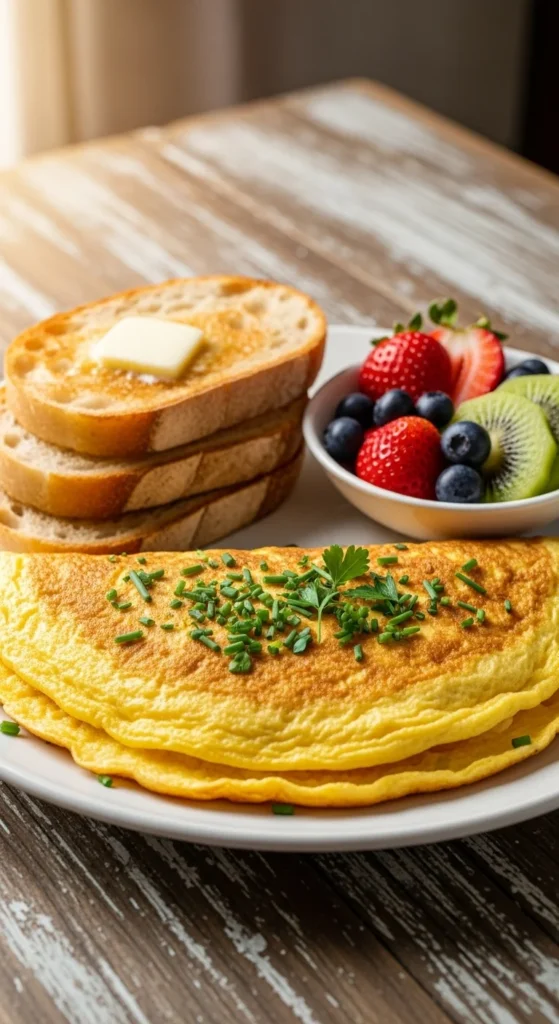



Leave a Reply